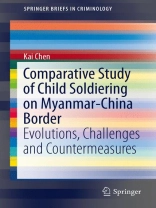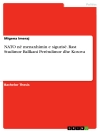From comparative perspective, this book explores the dynamics of child soldiering on the Myanmar-China border (i.e., Kachin and Shan States of Myanmar). At the same time, this book examines the structural factors and specific relationships between child soldiers, which have impacts on child soldiering. This book reveals that Myanmar has limited power to reduce child soldiering on the Myanmar-China border, and there is no optimal solution for reducing child soldiering in the near future. Instead, the book introduces the “transnational public-private partnership” approach as a “second best” solution and proposes suitable countermeasures for all the stakeholders.
Innehållsförteckning
Chapter 1 Introduction.- Chapter 2 Research Methodology.- Chapter 3 Child Soldiering on Myanmar-China Border.- Chapter 4 Structural Factors Impacting Child Soldiering.- Chapter 5 Why Children Involve in Armed Conflicts?.- Chapter 6 Why Other Children are not Recruited?Chapter 7 Transactional Public-Private Partnership: A “Second Best” Resolution.- Chapter 8 Possible Countermeasures to Reduce Child Soldiering.- Chapter 9 Outlook for Future Studies.- About the Author.
Om författaren
Kai Chen, Ph.D. is a postdoctoral research fellow at the Center for Non-Traditional Security and Peaceful Development Studies, College of Public Administration, Zhejiang University, China. From November 2013 to May 2014, he takes the position of visiting scholar at East Asian Institute, National University of Singapore. From 2009 to 2011, he was a postdoctoral fellow at School of International Relations and Public Affairs, Fudan University, China. His research focuses on international security, geo-strategic relations, and security governance in East Asia, especially Southeast Asia and China.












